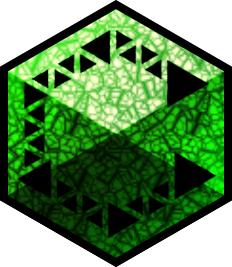I hear nothing but bad things when the topic of Unreal Engine 5 is brought up. It’s also true that the games I’ve played which use this engine have suffered from poor performance to one degree or another, so it seems like the complaints are well-founded, but I don’t actually know.
Is it a bad engine, or is it just not being used correctly by either the devs when they design their games or the players when they choose their graphical settings? Or a bit of both? What’s actually wrong with it, in layman’s terms?
Cheers!
I’m an Unreal Engine game dev and there’s some partial truth to this.
It’s true that if you use all the new fancy bells and whistles like Nanite and Lumen that you will very likely raise your minimum specs by quite a bit.
There’s more to this then just Nanite and Lumen, but these are the biggest offenders, so I’ll focus on them.
Nanite can be thought of in basic terms as a dynamic LOD system. LOD stands for Level of Detail and is used to reduce the amount of polygons (triangles) the GPU needs to render when an object is far away, swapping the 3D mesh/model with a more simplified version. A single mesh can have multiple LODs for various distances. For the game dev, this saves a huge amount of development time not thinking about LODs and the need to create them. For the player, this prevents pop-ins when the game engine is switching between LODs. What Nanite offers is incredibly complex geometry for meshes, highly detailed rocks and trees for example. One thing that Nanite suffers from is called Nanite overdraw. That is when many Nanite meshes overlap each other from the perspective of the player, like trees in a forrest. In this case the frame time goes up (FPS goes down) due to too much processing relative to traditional methods.
Lumen is the dynamic global illumination system in UE5. It offers (most of the time) superior lighting quality and also bounce lighting (when a window or a door is open in a dark room and light comes in and bounces around, lighting up the room). When a game uses only Lumen, there’s no static lighting which is baked before shipping the game. Baked lighting is incredibly performant, but the shadows from various stuff in the environment is static/baked, which means it can’t move. For game devs, this allows very quick iterations and much quicker dev time overall for the various scenes and environments. For players, this offers much better lighting and visual fidelity. However, like with Nanite, this increases the minimum specs.
There’s nothing really stopping devs from just using the traditional tools instead of these new dynamic tools. That would of course take longer, increasing dev time, and certain aspects would need to be more faked like before (day/night cycle with baked lighting for example).
Most UE5 games that have been released are using somewhat early versions of UE5. Epic releases 2 versions a year and we’re currently at 5.5.1 STALKER 2 is using some version of 5.1 IIRC. That means it’s using a very early version of Nanite and Lumen.
Ultimately it comes down to what the dev studio wants to use and these decisions have consequences, both good and bad.
There’s a YouTube channel called ThreatInteractive that goes deep on this. The guy comes off as a bit too hostile for some and maybe hyperbolic, but the core of what he’s saying is true.
Exactly this, new versions of UE 5 also have improved performance impacts from some of things things like the global illum
It can be an amazing engine.
If you put the Dev time in. Not all studios do that, and they’ll do dumb shit like disable hardware ray tracing. Which doesn’t hurt old cards where that’s the only option, but really hurts newer cards.
So it’s not like UE5 sucks, it’s just the first games were “showcases” that had the necessary Dev time and set everyone’s hopes too high. Then later games makes it seem shitty
What’s actually wrong with it, in layman’s terms?
2 things I find, but they are people problems not technical ones.
- Wrong tool for the job. UE5 is a versatile engine but it isn’t for everything.
- Bad developers blaming their tools for their own failures. UE5 runs C++ but you can use intermediate languages which the engine will convert to C++ but as the old joke goes C makes it easy to shoot yourself in the foot; C++ makes it harder, but when you do it blows your whole leg off.
I’ve never heard bad things about it, nor had issues with games that use it. What have you heard and experienced?
Let me go find the youtube video this is likely referencing.
I think it’s probably referring to this video.
There’s also the various devs who are using it to shortcut making their own models, making a growing catalog of increasingly homogenous looking games.
I think any good developer can make any tool good if they have the proper time to optimize and bug fix. But I don’t think most management really gives time to those things anymore. I know the fortune 50 company I work for is embarrassingly lacking in Quality Assurance on any of our development work, I can only imagine how poorly some other huge companies actually manage.
I’ve also heard a few people saying it sucks, but I have no idea why. Nothing I’ve played built on the engine has been any different than games on previous Unreal engines in terms of performance for the most part. The most egregiously bad game I’ve played on it was Stalker 2; but I don’t think the issues in that game had anything to do with the engine. Technically speaking it was flawless; all the bugs I experienced were with quests constantly breaking, but that’s also how the previous 3 stalker games were at release.
However, looking at the list of all games on UE5, a lot of them are just shit games in general.
So I’ve been playing Marvel Rivals which uses Unreal 5 and it’s pretty and fairly responsive but I see so much “overwatch does this so much better” all over the place.
Being the utility engine seems to be showing some, but also maybe this could just be they need more time to refine in engine.




